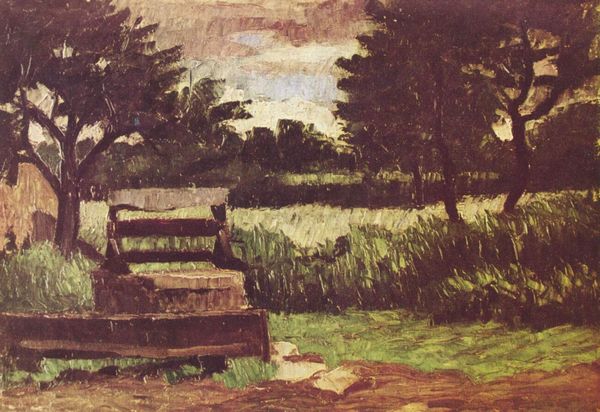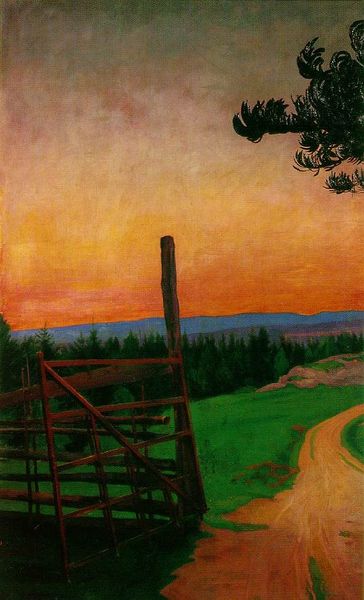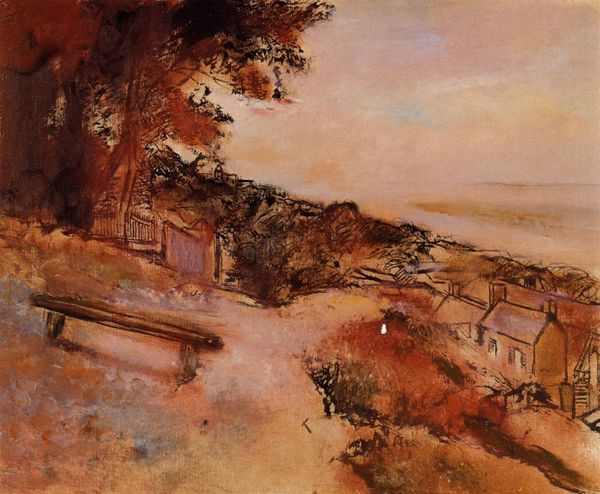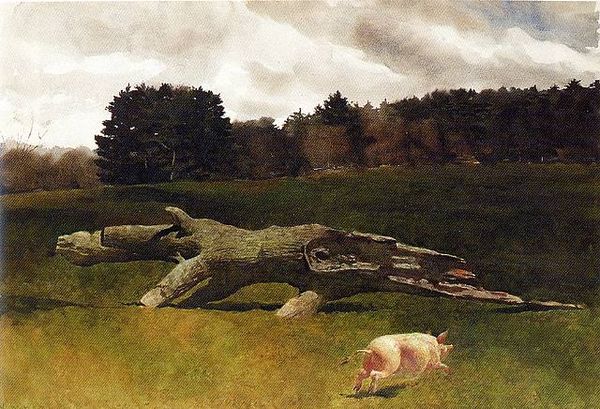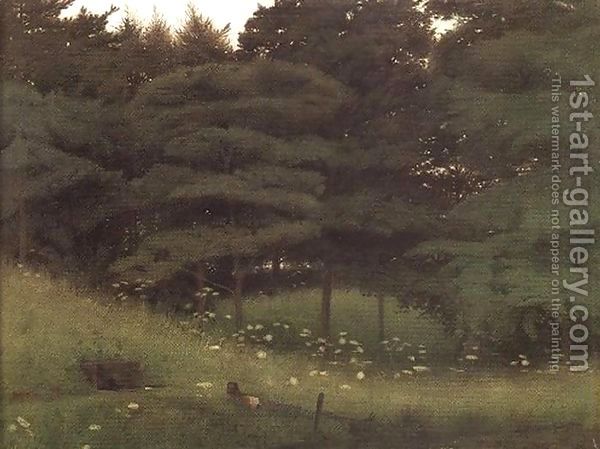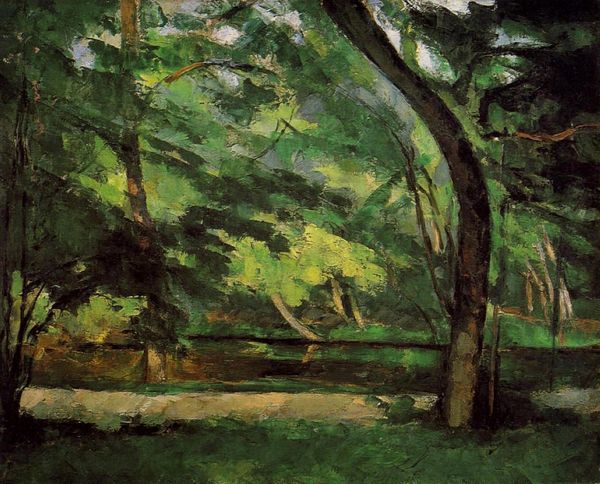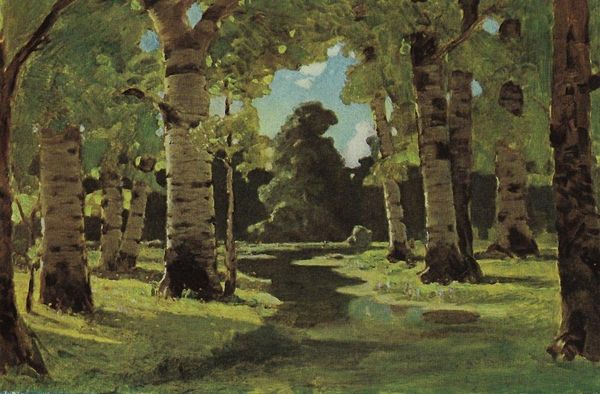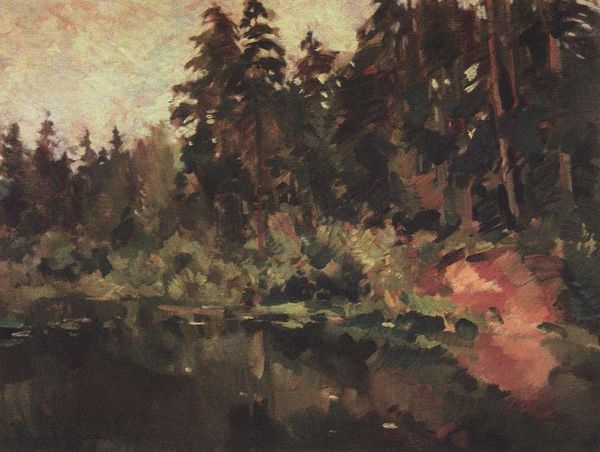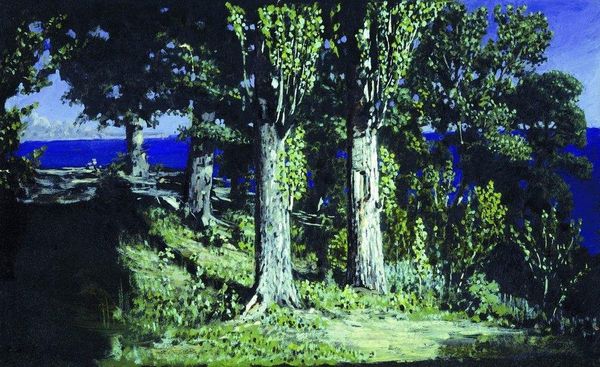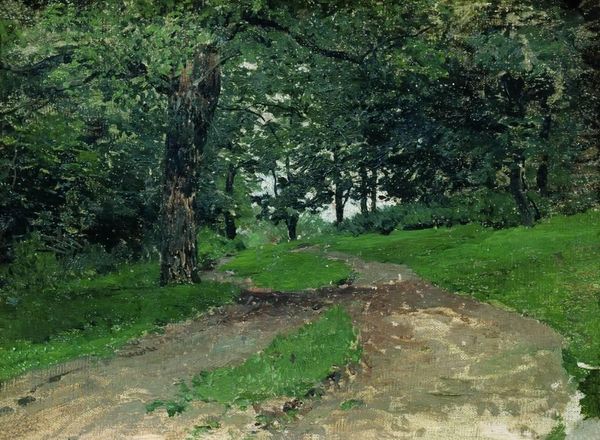
painting, watercolor
#
tree
#
garden
#
sky
#
contemporary
#
painting
#
landscape
#
oil painting
#
watercolor
#
watercolor
#
realism
Copyright: Jamie Wyeth,Fair Use
Editor: Jamie Wyeth's "Island Library," created in 1977 with watercolor and oil paint, presents a peaceful outdoor scene. What strikes me most is the arrangement of these empty chairs – they seem to be waiting for someone. What catches your eye? Curator: The chairs themselves evoke a powerful sense of American nostalgia. The Adirondack chair, originally designed for tuberculosis patients needing fresh air, carries layered symbolic meanings of rest, recuperation, and connection with nature. Note how the artist positions them—almost anthropomorphic. It invites us to consider human absence and presence. What’s left behind? What's about to happen? Editor: I didn’t know about the chair’s history! Does the "island" in the title affect your reading of the scene? Curator: Absolutely. Islands have always represented isolation, retreat, a space set apart. Combined with the image of empty chairs suggesting conversation and companionship, it evokes that dual tension: being together, being separate; public life and private experience. Wyeth’s island invites introspection, much like the act of reading. Do you feel a connection between landscape, personal stories, and shared memories within this work? Editor: Yes, especially considering the title. There's something inviting but also melancholic. It’s like viewing a stage after the actors have left. It’s less about the island itself and more about who isn’t there. Curator: Exactly. Visual culture operates by presenting fragments that complete mental maps and social ties. Here we observe familiar and nostalgic iconography prompting deeper questions. Editor: Thanks. I hadn’t thought about it that way! The symbolic reading adds so much depth. Curator: Indeed, viewing images with consideration and historical awareness enhances one's own sense of visual memory, placing us in conversation with the past.
Comments
No comments
Be the first to comment and join the conversation on the ultimate creative platform.
